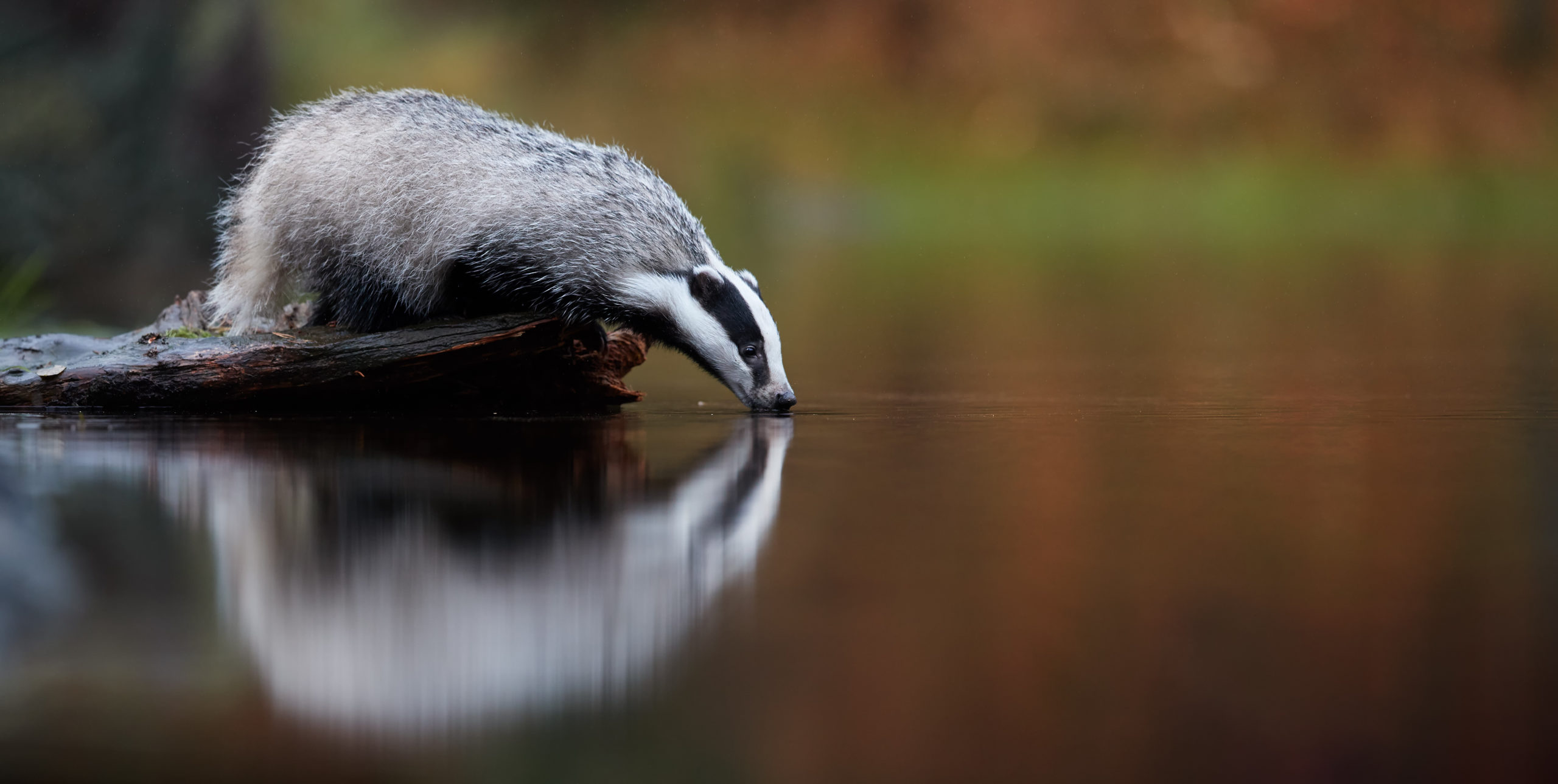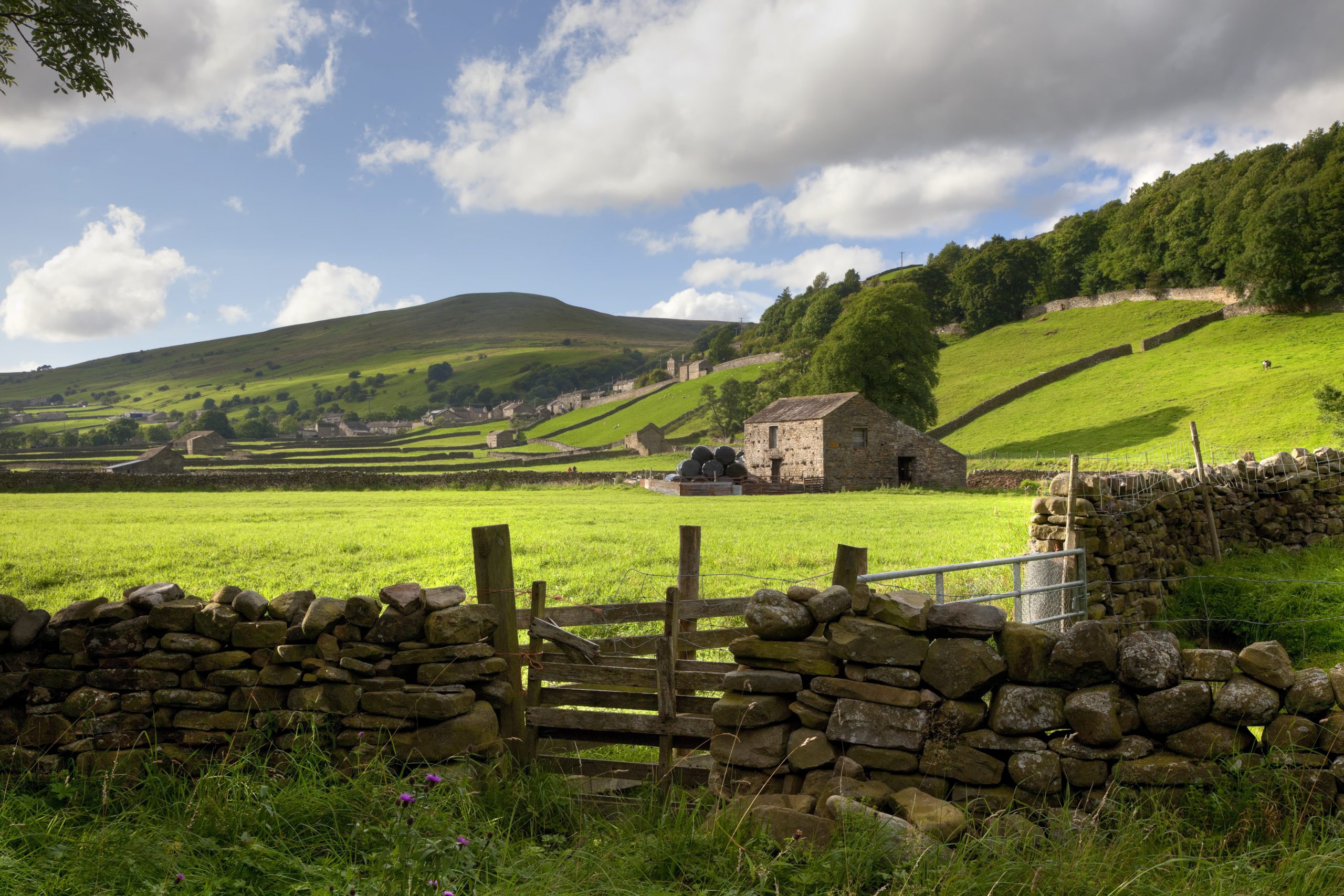Why do this?
If not managed carefully, animal feed can attract wildlife, including badgers, to your farm. TB-infected badgers can excrete M. bovis bacteria through various routes including sputum, urine, faeces and discharges from bite wounds. This can result in contamination of feed and the area around it, which can then act as a source of indirect transmission of TB to cattle.
How to reduce your risk
Badger-proof feed stores, troughs and mineral licks
Feed store walls and doors should be secure and doors kept closed, especially at night. If you can’t stop badger visits to feed stores, consider other means of storing feed, for example in secure bins or silos. Silage clamps should be well covered and if possible, the face protected by electric fencing or other exclusion measures. If using electric fencing, strands of wire should be at 10, 15, 20 and 30 cm above the ground.
Badgers are likely to be attracted to feed troughs and mineral licks. Accessible feed may increase the likelihood of badgers coming into contact with cattle, either directly, or indirectly through excretions. Although it is difficult to completely exclude badgers from feed troughs and mineral licks, particularly when they are used at pasture, there are measures you can take to make these less attractive and more difficult for badgers to access. These include:
- When feeding cattle, only use the amount that is needed for the day so that there won’t be any left for badgers at night.
- Clean troughs regularly to prevent residue build-up that may attract badgers.
- Raise feed troughs as high as possible while still allowing access for cattle. The troughs should have sheer sides and no footholds to make it difficult for badgers to gain access.
- Use holders to raise mineral licks as high as possible. These can be free standing with sheer sides and no footholds, attached to gates or suspended from trees. They can be home-made or are available commercially to buy.
- Placing feed on the ground at pasture is an open invitation to badgers and should be avoided as a method of feeding cattle. It is good practice to also keep your farm free from spilt and waste feed.

Use clean, fresh water and badger-proof water troughs
Non-mains water sources may be potentially contaminated by infected livestock or badgers. This risk is likely to be greater in high TB incidence areas. Mains water or other clean, fresh water should be used wherever possible. Stagnant ponds and other areas where wildlife may drink should be fenced off.
As badgers can gain access to water troughs, consider taking similar precautions as described for feed troughs to prevent this happening. Troughs should be regularly cleaned and disinfected to minimise the risk of cattle being exposed to contaminated water.
Only feed waste milk to calves if it has been boiled or pasteurised
Infected cows can excrete M. bovis bacteria in milk. As well as being a source of infection for people, calves fed milk from infected cows are also at risk of developing TB, and severe outbreaks in calves have occurred through this transmission route. The risk will depend on your herd’s TB status and the infection status of individual cows used to supply milk for calves. Feeding waste milk to calves also increases the spread of other diseases such as Johne’s disease.
It is not recommended to feed milk from TB reactors or inconclusive reactors to calves or other livestock. If it is necessary to feed your waste milk, then it should first be boiled or pasteurised to kill any M. bovis bacteria that might be present. Never feed milk from another herd as TB-infected cows may be present, even if the herd is officially TB free. The feeding of milk is controlled by the Animal By-Products Regulations.
